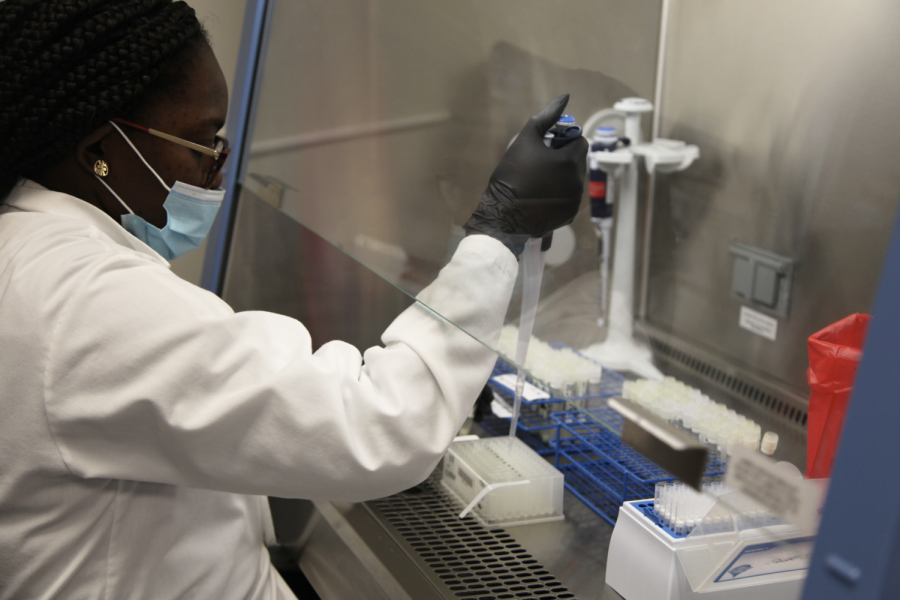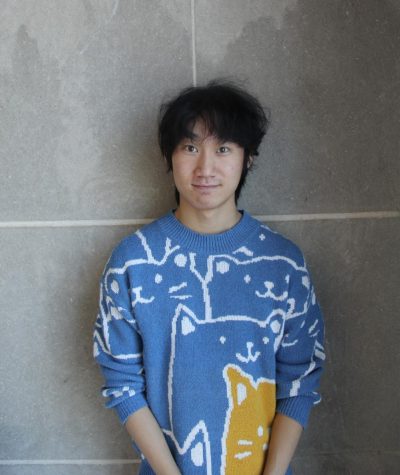Behind the scenes of SHIELD COVID-19 testing
Medical technologist Mavis Kwarteng manually transfers a portion of the saliva from samples to a plate of 96 holes as part of a process to prepare saliva samples for SHIELD testing at the Gift of Hope Organ & Tissue Donor Network laboratory.
December 13, 2021
In an effort to keep students safe and in school, District 203 signed up to use the free covidSHIELD test administered by SHIELD Illinois, an affiliate of the University of Illinois.
As part of the process, SHIELD Illinois has partnered with seven laboratories to process their samples. Samples collected from District 203 K-12 students are then sent to one of these laboratories to be tested.
What’s a covidSHIELD test?
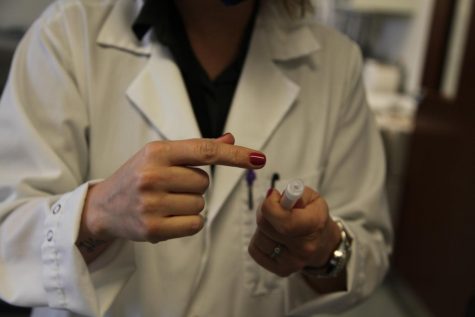
The covidSHIELD sample collection kit consists of a funnel, sample tube and cap. When students enter the testing area, they will first tell a test collector their birthday, and the collector will write it onto their sample tube. Students are then given their sample tube with a funnel attached in which they are instructed to drool, not spit, up to a marked line. Finally, students will screw on a cap and place the sample onto a tray where another staff member will confirm their birthday and name.
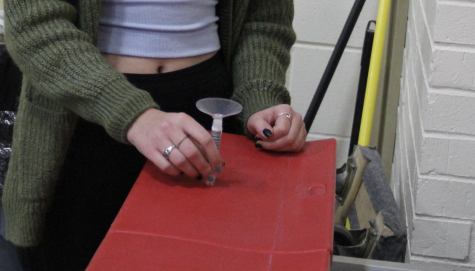
SHIELD testing currently occurs once a week for all students across all 22 District 203 schools. Additionally, the Test to Stay program allows students found to be in close contact with a confirmed COVID-19 case to stay in school, as long as they test on days one, three, five and seven after their exposure. Test to Stay testing takes place at the District 203 office at 203 W Hillside Rd. from 3-7 p.m. Monday through Friday, according to a District newsletter.

The Gift of Hope Organ & Tissue Donor Network laboratory
The Gift of Hope Organ & Tissue Donor Network laboratory is one of the seven laboratories SHIELD Illinois partners with to process tests. While they primarily test for potential organ and tissue donors, after the onset of the coronavirus pandemic, the Gift of Hope laboratory began providing COVID-19 testing as part of the SHIELD program.
“The intent is, honestly, to help the community,” said Dr. Sam Ho, Director of Gift of Hope’s Histocompatibility and Infectious Disease Testing Laboratory.
The Gift of Hope laboratory also must adhere to regulations and certifications, including fulfilling FDA requirements and obtaining a Clinical Laboratory Improvement Amendment certificate.
“It’s not a drive through testing [that] anyone can run,” Ho said. “We have trained personnel. We hold the standards [from] the back end onto the front end.”
A look into the Gift of Hope’s COVID-19 testing laboratory
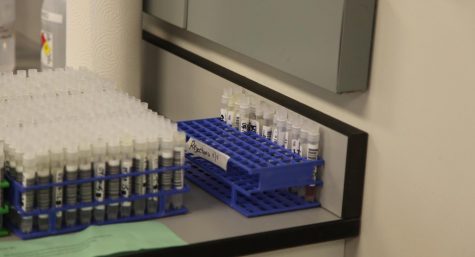 Upon arriving at the lab, the samples are first checked by lab technologists. Samples that have unnatural coloring, chunks or do not look like saliva are rejected, set aside and not tested.
Upon arriving at the lab, the samples are first checked by lab technologists. Samples that have unnatural coloring, chunks or do not look like saliva are rejected, set aside and not tested.
The barcode on accepted samples acts as an identifier and is scanned following subsequent steps to record a timeline of where the sample is.
Accepted samples are then placed in a water bath at 95 degrees Celsius for 30 minutes, rendering the virus inactive. This safety procedure ensures that the virus is no longer contagious.
Following the water bath, samples are then placed into an ice tray that cools the sample down to reduce the reaction rate and preserve the sample.
A medical technologist then sorts the samples depending on quality; samples that contain more saliva than necessary, mucus or are otherwise sub-optimal will be sent to manually moved from the test tube.
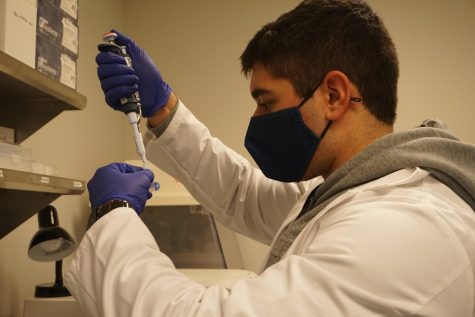
Another medical technologist then manually moves a portion of the saliva from the samples marked to be moved manually to a plate that holds 96 samples. Samples not marked for manual movement are moved from its test tube to the same plate by a machine.
An apparatus around the medical technologist sucks air into the chamber and through a filter. This prevents potentially infections aerosols inside the chamber from getting out. Gloves must be changed every time they leaves the chamber. These precautions decrease the risk of contamination and infection.
Among other methods, the Gift of Hope Organ & Tissue Donor Network uses controls to ensure quality test results. The negative control consists of UltraPure DNase-free and RNase-free water and the positive control consists of the Thermo Fisher Scientific TaqPath COVID-19 Combo Kit provided positive control, according to the covidSHIELD test’s Emergency Use Authorization issued by the FDA.
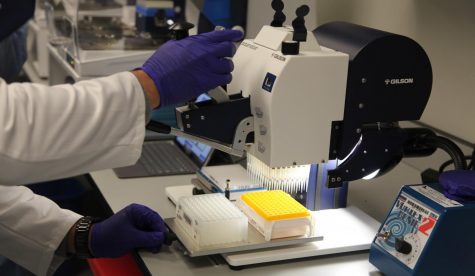
Finally, a full plate of 380 samples and four controls will then be placed in a machine, which detects COVID-19 through a process called nucleic acid amplification, which identifies the ribonucleic acid sequences that comprise the genetic material of the virus.
The covidSHIELD test looks for three genes, at least two of which must be found for the test result to be positive. This standard results in a highly sensitive test that is also accurate.
As testing procedure does not use all of the saliva, leftover saliva will be kept in a controlled climate for two days, then disposed of through a contractor.
Students who participate in the testing program can access their results by logging into their MySHIELD Illinois account, and a notification email will be sent when results are ready. Patient support can be reached at (217) 265-6059 for help setting up an account.



